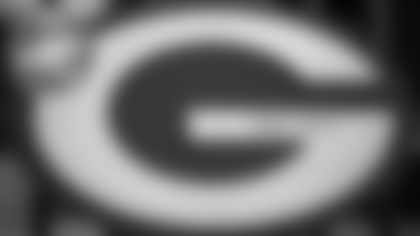Brad from Grafton, WI
Love your work. First, what is your unbiased assessment of Dan Devine and the 1972 Packers? Second, I have always had the impression – because of Packers publications – that the organization has made an effort to downplay the accomplishments of the 1972 team under Devine. Fans who saw that team firsthand have spoken more favorably about it. And with a little NFL Films research, it seems to me to be a very interesting and talented team that didn't win the NFC Central Division accidentally. I realize I probably don't have the whole story, and that is why I look to you to clear up the disconnect.
Thanks for being a reader and you are absolutely correct: The 1972 Packers, the best of the 24 teams during the post-Lombardi drought, didn't win the division by accident. Lee Remmel covered the Packers for the Green Bay Press-Gazette from 1945 to early 1974, when Devine hired him to be director of public relations. Thereafter, Remmel worked for the Packers until 2007. That's a span of more than 60 years, stretching from the end of the Curly Lambeau era to the start of Mike McCarthy's reign, and Remmel always marveled at how well the 1972 team played down the stretch. "I'll say this, I think the Packer team in the last four, five, six weeks of that '72 season played as well as any Packer team I've ever seen," Remmel told me in 2002. That's high praise from someone who covered all five of Vince Lombardi's NFL championship teams as a reporter and then had an insider's view of the 1996 Packers. To your point about the organization downplaying the accomplishments of that team, I think Lee's comments are proof that hasn't been the case. Also, keep in mind, the Packers have won 13 NFL championships and the 1972 team is one of 16 others in club history that won a division or conference title but not a league championship. Thus, I don't think they've been overlooked any more than the 1938 or 1960 or 1995 or 2003 or 2011 or any of the 10 other Packers teams that matched their accomplishments. But take nothing away from what was the only Packers team to win a division between Lombardi's last season and Mike Holmgren's fourth season. In 1972, I was in my second year as a sportswriter at the Press-Gazette and while my main beat in the fall was covering high school football, I was assigned to write about at least three Packers home games that season, including the Dec. 3 showdown against Detroit that gave them the inside track on winning the NFC Central Division. It was a frigid Sunday afternoon at Lambeau Field and the game was no contest. The Packers dominated 33-7. The following week, they were just as impressive, beating the Vikings, 23-7, on another brutally cold day at the old Met in Minnesota to clinch the division. As I think back off the top of my head, I can't remember any Packers team ever looking any better in back-to-back late-season games with so much at stake. MacArthur Lane and John Brockington were as good a backfield tandem as any the Packers have had since Paul Hornung and Jim Taylor were in their prime in the early 1960s. Brockington and Lane rushed for a combined 1,848 yards. The offensive line was solid, as well, although perennial all-pro guard Gale Gillingham was moved to defense and then lost for the season in the second game due to injury. The defense ranked second in the league in fewest yards allowed and second against the run. Defensive tackle Bob Brown and linebacker Fred Carr made the Pro Bowl. Willie Buchanon and Ken Ellis played as well as any cornerback tandem I can remember, at least since Herb Adderley and Bob Jeter in 1967. Maybe Charles Woodson and Al Harris played at a similar level during a stretch from 2007 to 2009. But Buchanon was the AP's NFL Defensive Rookie of the Year and Ellis was an AP All-Pro. This is a strong statement, but I don't know that I've seen a Packers cornerback since Adderley have a better year than Buchanon did even as a rookie in terms of shutting down receivers and forcing on the run. Woodson made more big plays in his best years in Green Bay, but Buchanon was younger, faster and a textbook tackler before he broke his leg twice in three years. At linebacker, besides Carr, the Packers also had Pro Football Hall of Famer Dave Robinson and Jim Carter, who was selected to the Pro Bowl a year later. The only linebacker trio that I can think of that played better since the Lombardi era was Carr, Carter and Ted Hendricks two years later, only because Hendricks was in the prime of his career and Robinson was 31 and two years removed from an Achilles tendon injury in 1972. As for Brown, this might sound crazy, but he could overpower blockers and toss them around like Reggie White during his moments of brilliance. Discovered by personnel director Pat Peppler while playing for the Wheeling Ironmen of the Continental Football League, Brown was a 27-year-old rookie in 1966 and played as a reserve on two of Lombardi's championship teams. He also had his best year in 1972. Otherwise, he fought a constant battle with his weight and was never in good enough shape to dominate consistently. Another key to that 1972 team was rookie kicker Chester Marcol, who kicked 33 field goals. He still shares the club record for most field goals in a season. The only weakness on that '72 team was the passing game. The Packers ranked 25th out of 26 teams. Starting wide receivers Carroll Dale and Leland Glass caught 16 and 15 passes, respectively. Scott Hunter, the starting quarterback, was in his second year and had suffered a shoulder injury in college that robbed him of velocity on the passes that separate great quarterbacks from the rest. That said, Hunter had something working in his favor that can't be quantified: His teammates responded to his leadership. To this day, players on that team believe they could have won the Super Bowl if not for Devine. They lost to Washington, 16-3, in the NFC Divisional Playoff and then Washington lost to unbeaten Miami, 14-7, in the Super Bowl. Clearly, Miami with Don Shula and Washington with George Allen had a bigger edge there than they did among players, but that's another subject to be covered in our book on the 100-year history of the Packers, due out later this year. For now, I'm just going to refer you to this oral history with guard Bill Lueck and this one with Brockington.
Ned from Green Bay
I've been so impressed with your Packers Heritage Trail project over the years. We just inherited a trunk from my in-laws and I'm wondering if it looks like it might be an authentic and maybe date back to the 1940s. It's got the No. 14 on it in several places. Have you ever seen one of these?
Glad you've enjoyed the Heritage Trail. As for the trunk, no, I've never seen one. The Heritage Auction site has posted pictures of trunks from the 1960s, but I didn't find one from the '40s. Again, I'm in no position to determine if that was once Don Hutson's trunk, but I believe it certainly could have been. I can't imagine that the players from his era didn't all have large trunks to use on team trips. When Hutson played from 1935-45, the Packers almost always traveled by train and often were on the road for extended periods of time. Back then, the Packers usually played all or almost all of their home games early in the season and then finished up with a series of games on the road. And they'd stay on the road without returning home in between games. Consequently, they had to carry a lot of baggage, including everyday clothing and other items, as well as their team gear for both games and practices. Here, for example, was what Hutson's life was like in 1936, when he won his first championship. The Packers started the season playing their first six games at home – four in Green Bay and two in Milwaukee – before playing their last six on the road at Chicago, Boston, Brooklyn, New York, Detroit and Chicago for a second time. The Packers departed Green Bay on a train on Friday, Nov. 6, arrived in Boston Saturday morning, stayed at the Parker House, won on Sunday and then caught a train on Monday for New York. Their plan was to stay at Blue Hill Golf Course, near Orangeburg, about 30 miles north of New York City, and work out there for the next two weeks. But Lambeau didn't like the arrangements, so within two days, he moved the team into Manhattan. The practice field at Blue Hill wasn't protected from the cold winds and, worse, "made-over barns" there served as dormitories, according to George Calhoun, secretary of the Packers and telegraph editor of the Press-Gazette. Upon moving into New York, the Packers stayed at the Hotel Victoria and practiced on the West Meadow football field in Central Park. They beat the Dodgers and Giants on back-to-back weekends, and then caught a train to Detroit on Wednesday, Nov. 25. There, they stayed at the Statler Hotel, enjoyed a turkey dinner on Thanksgiving, worked out at the University of Detroit and beat the Lions on Sunday for their ninth straight victory. They also clinched the Western Division title and were greeted by 3,000 fans at the Milwaukee Road depot when they returned home the next day. Five days later, the Packers took a train to Chicago for their finale against the Cardinals and then returned home Sunday night. At 7 a.m. Tuesday, they boarded another train and arrived in New York 24 hours later for the league championship game against Boston. The Packers stayed at the Victoria again and practiced again in Central Park. They won the title with a 21-6 victory over Boston on Sunday and arrived home at 10:30 p.m. Monday, when they were greeted at the Milwaukee Road depot by an estimated 10,000 fans. Two weeks later, the Packers reconvened in Denver to begin preparation for a more than month-long barnstorming trip that would include five games: one in Denver, one in San Francisco and three in Los Angeles. Nothing like making a short story long just to let you know that trunks were likely a necessity. But that was a typical schedule for the Packers teams of the 1920s through the '40s. Here's something else we know: No Packers player has worn No. 14 since Hutson in 1945. However, seven players wore it previously, including two other Pro Football Hall of Famers: Lambeau in 1927 and Johnny Blood in 1933. Lambeau, as you know, was a native of Green Bay; and John McNally, Blood's birth name, was from New Richmond, Wis. Hutson was originally from Arkansas, but lived in Green Bay while he played and later lived in Racine for more than a quarter-century. My guess is that Hutson would have been the most likely owner of the trunk just based on the number of years he wore 14 and the time he spent in Wisconsin. But I'd check with your in-laws for more information about where the trunk might have come from; if anybody in the family might have known any of those three Hall of Famers, or lived in any of those other Wisconsin cities. Whatever you could find out would help. One other name I might ask about, just to see if it rings a bell with anyone, is Paul Fitzgibbon, who wore No. 14 in 1931-32. He was a native of South Dakota and became a doctor after he quit playing, practicing medicine in Long Beach, Calif. I've heard from other players of that period that he was a good friend of Blood's and might have stayed in contact with some people in Green Bay. In truth, someone with expertise in Packers memorabilia would be a better source than me to get to the bottom of it all. But the more information you have the better off you'd be.
Randy from Green Bay
During the suspension of Packers stadium tours, I reviewed the information I present and checked it primarily through a variety of sources – mostly from Packers website notes and your Packers Heritage Trail book. One of the statements that I say differs from many other guides is based on something I read a year or two ago, and you were the author. It has to do with the three oldest teams in football. I now say the Packers are the second oldest (Cardinals oldest and Bears third) based on what I read. Can you point me to where you would have written that?
I truly appreciate your efforts to be accurate. And, yes, it is accurate to say the Packers are the second oldest team in the NFL. While I've written that on more than one occasion, I'm not exactly sure where you might have read it. How about if I just answer the question again? The Cardinals are the oldest team in the NFL, although they've moved from Chicago to St. Louis to the Phoenix area in the league's 101 seasons. The Cardinals trace their roots to 1898 and the Morgan Athletic Club. Unlike in Green Bay, where there was no direct connection between the Packers and the town teams that preceded them, the Cardinals can rightfully claim more than one direct link to the Morgan AC team, starting with one of its founders. Chris O'Brien, who helped organize the team and then became captain in 1900, was still in charge of the Cardinals when they became charter members of the American Professional Football Association (now the NFL) in 1920. In fact, O'Brien remained owner until 1929. Another link was the nickname Cardinals, which was adopted in 1901. Because the team belonged to a loosely organized Chicago league in its pre-NFL years and played its games at Normal Park, located along Racine Avenue, the team was called the Racine Cardinals and were still referred to by that name until the Racine (Wis.) Legion was admitted to the NFL in 1922. Both the Cardinals and Decatur Staleys (now the Chicago Bears) were charter members of the APFA in 1920. The Packers were admitted in 1921. However, the Packers were founded in 1919, a year before the Bears (Staleys). Until a number of authors over the last 30, 35 years started linking the Packers to those early town teams, the team itself in the 1950s, if not earlier, started its historical review in its own publications with the following sentence: "The Packers began in 1919 as a 'scrub' team of former Green Bay High School stars…" And no matter what others might have written nothing has changed. The Packers started out as an alumni team of former Green Bay East and West high school players. As I stated, you are now giving fans an accurate account of our history. The Cardinals are the oldest team and the Packers the second oldest. However, the Packers are third oldest in terms of membership in the NFL. Then again, the Packers have been based in the same city longer than any team in the NFL.















